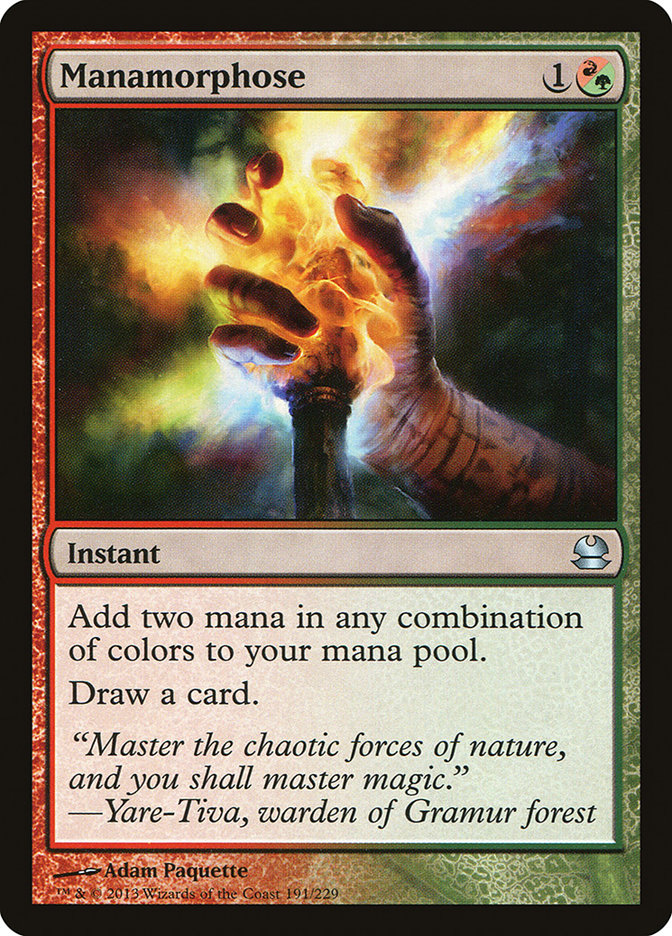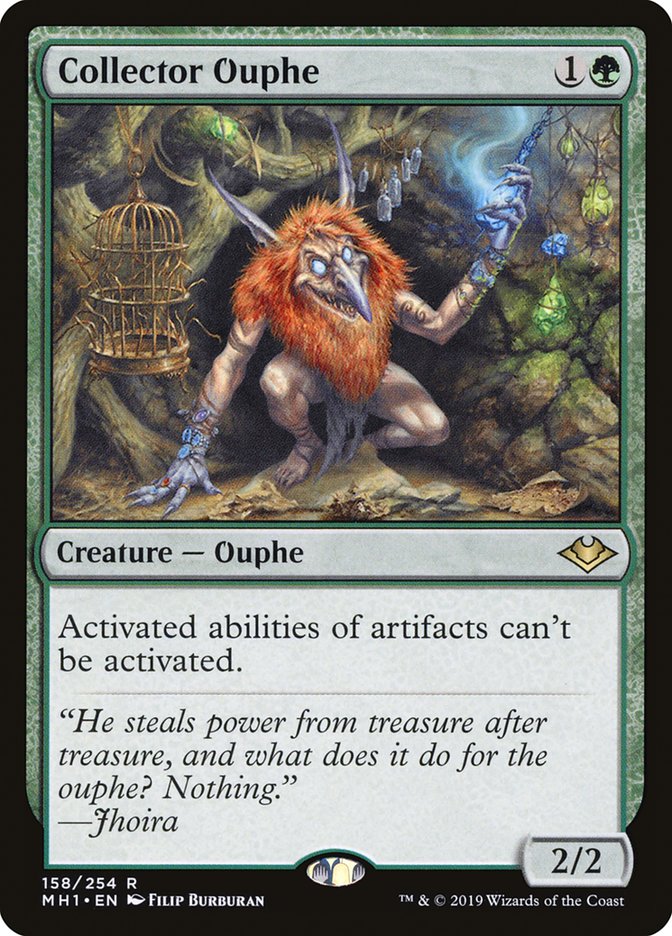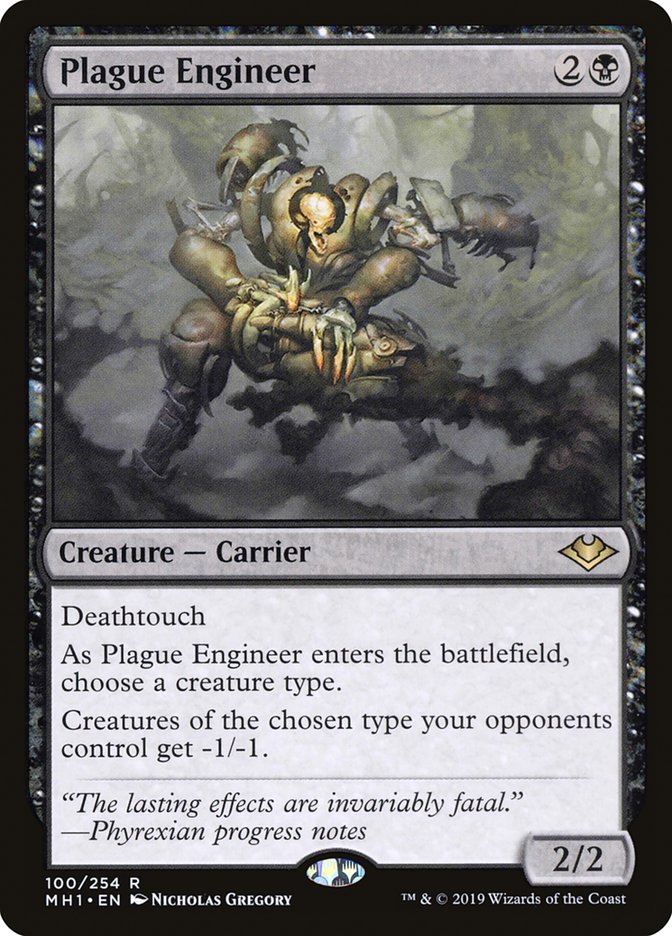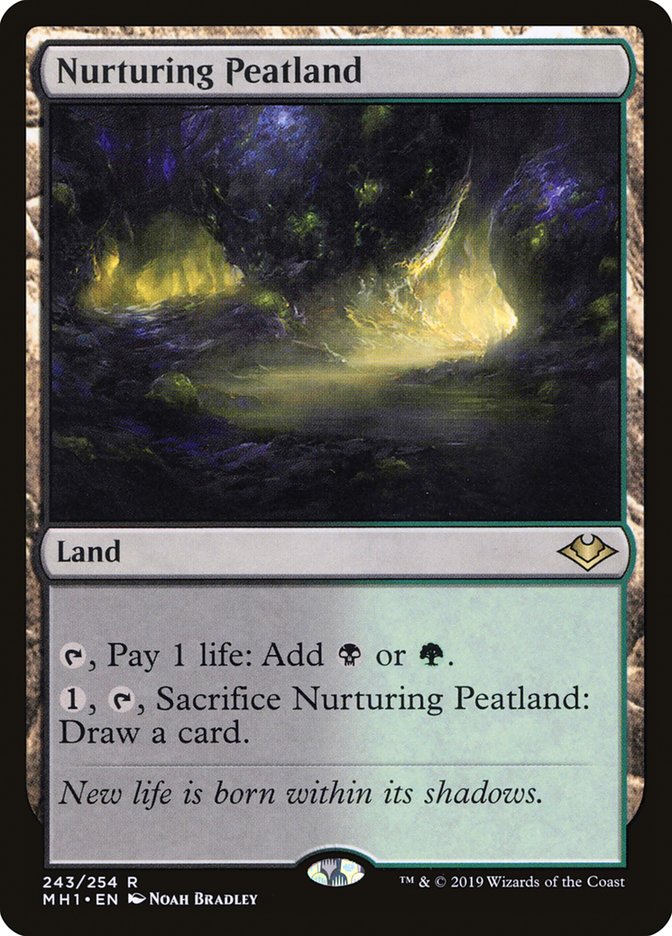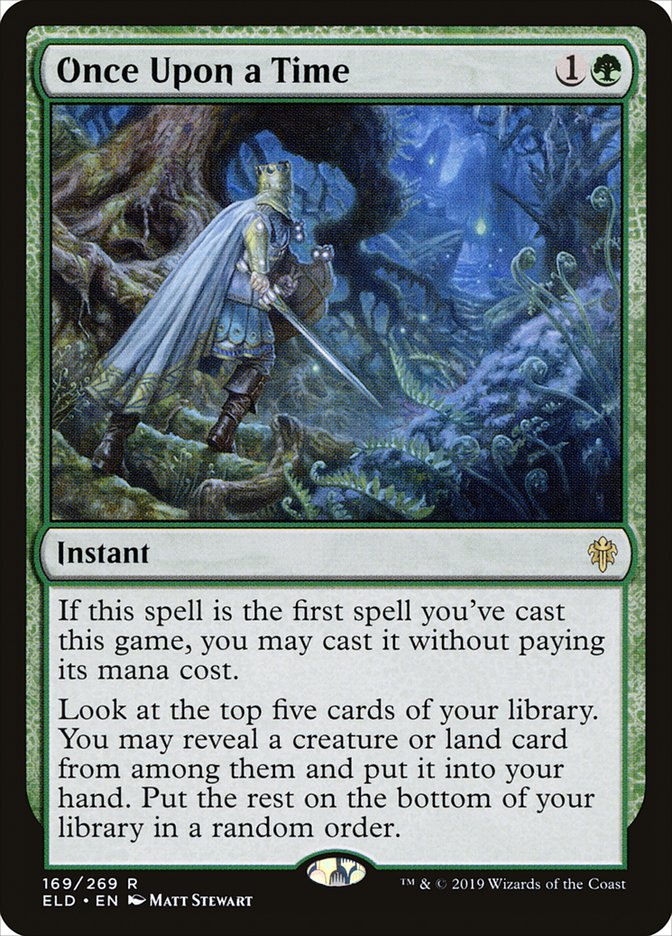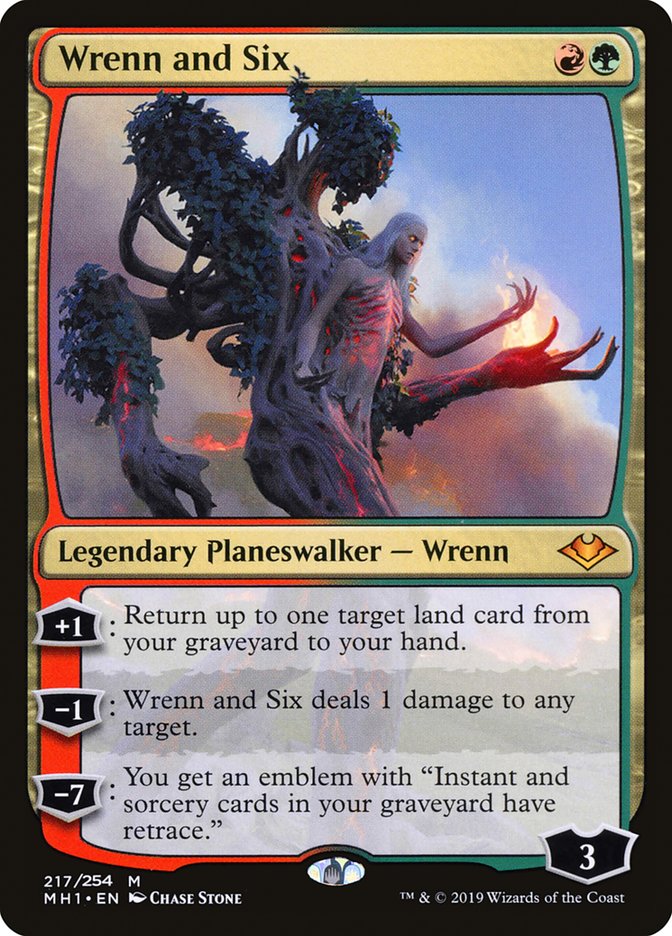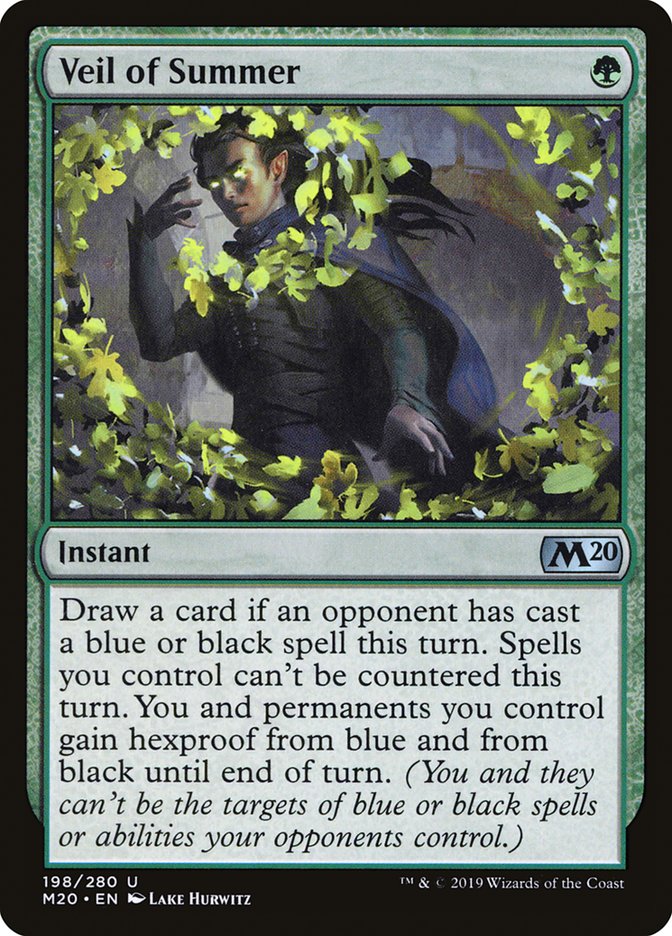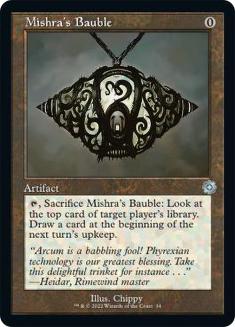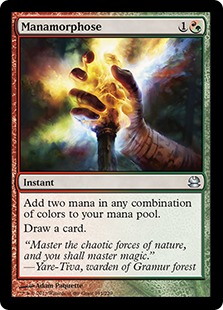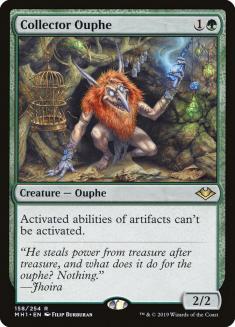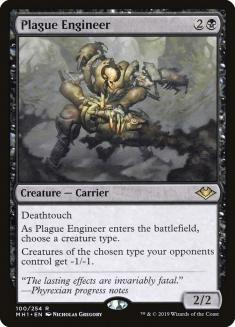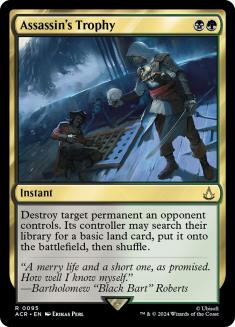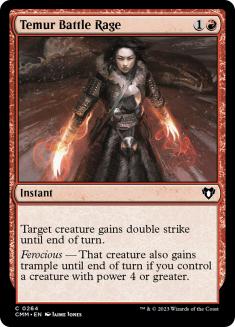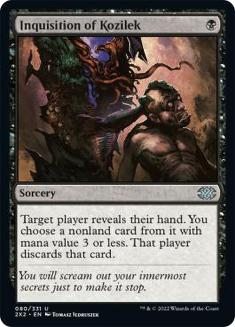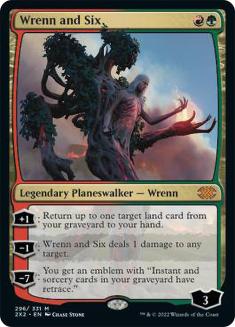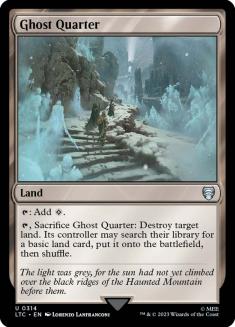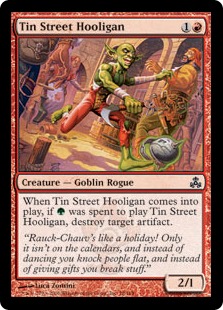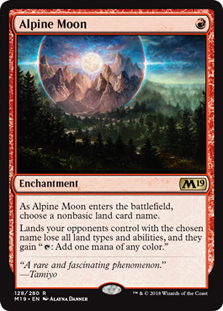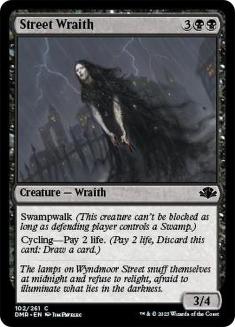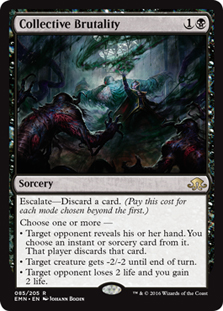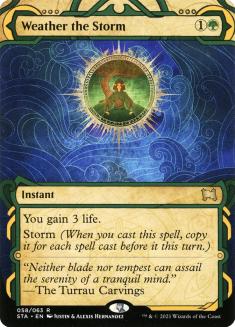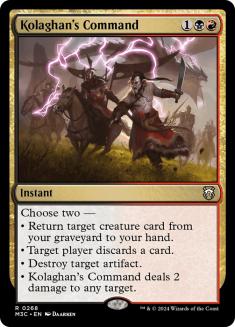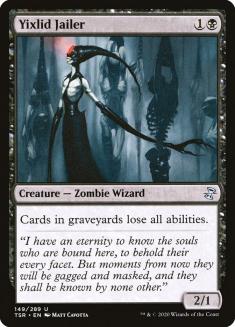Modern as a format is hardly recognizable after four consecutive sets of wildly impactful cards. Despite all these changes, I’ve found a groove with Jund Death’s Shadow, a deck that broke onto the scene with a dominant performance at GP Vancouver almost two years ago.
So what has changed to bring this dormant deck back into the fold? Today I’m going to talk about the small innovations that have powered the deck up, interesting cards that currently don’t make the cut, and how to sideboard in the most common matchups of the format. But to understand how subtle the changes to Jund Death’s Shadow have been, let’s start by comparing Josh Utter-Leyton’s breakout build with my current list.
Creatures (13)
Planeswalkers (2)
Lands (18)
Spells (27)

Creatures (13)
Lands (17)
Spells (30)

It’s incredible what a difference ten maindeck cards can make. Manamorphose, while not a new card, has been a revelation for the deck. Jund Death’s Shadow has long used Traverse the Ulvenwald to cheat on the number of threats you need to play, and while putting a land and sorcery in the graveyard was trivial, the last two card types could present a challenge. This issue would especially rear its head when you were unable to cast Fatal Push. Without any proactive instants, you would have to draw Mishra’s Bauble and Street Wraith to reach delirium, and failing to do so could result in losing a game due to a lack of threats.
Beyond Manamorphose making more consistent copies of Traverse, Modern Horizons has brought some wildly powerful new tools to tutor for. Collector Ouphe is the real headliner here, as we now have a metagame where the current frontrunner for best deck in the format is one of many Urza-based strategies that are severely handicapped by a Stony Silence effect. Ouphe’s value extends beyond Urza decks, though, as Mono-Green Tron is another popular deck that loses functionality on a large number of spells under an Ouphe.
Plague Engineer also stands out as not just a generically powerful card but one that fixes what used to be a hole in Death’s Shadow’s gameplan. With tribal decks bringing a pile of mostly identical creatures, discard and light spot removal was infrequently enough to close games. Jund Death’s Shadow was forced to mostly try to steal games with Temur Battle Rage. That dynamic has fundamentally shifted with an effective five copies of Engineer, and it pairs well with Wrenn and Six to dominate small creature matchups.
The final new card that is absolutely worth highlighting is Nurturing Peatland. This new Horizon land fits perfectly in so many ways. Having repeatable life loss gives you excellent flexibility on setting your Shadows to precisely the correct size, and I don’t think I’m too off base saying that Peatland tends to play like a Bayou with upside. You’re also playing a deck that historically has had an issue with flooding, but that is largely mitigated when you have four lands that can cycle.
When it comes to glaring omissions, the first to discuss is Once Upon a Time. I’d like to acknowledge I do believe and understand that Once Upon a Time is an unbelievably powerful card. But despite all the positives, I don’t think it makes the cut here. Shadow has 31 targets, and even worse, most of them are interchangeable and low-impact things like lands with no abilities.
Beyond that, Jund Death’s Shadow primarily cares more about finding disruption over finding threats. That incentive pushes me towards running Manamorphose, because while it does require mana to be cast, it serves a similar purpose of being a “free” instant that can be turned into disruption. Finally, Once Upon a Time is cumbersome to actually cast in a deck whose main appeal is how brutally efficient it can be. Going down two mana when cast the honest way is simply well below rate here in a deck that isn’t close to optimizing the card.
Veil of Summer is the card that I’ve wanted to most work into my sideboard. And while Jund Death’s Shadow doesn’t want to overload on reactive elements, the card is still always a one-mana Dismiss when you sideboard it in. I’m struggling to make room in my sideboard for additional help in the fair matchups, and if I have to pick one card for that role, Wrenn and Six has been impressive. The versatility to pick apart small creatures, return Ghost Quarter every turn against big mana decks, or recur Nurturing Peatland when grinding is the name of the game gives high upside possibilities against much of the field at large.
Sideboarding
VS Urza Ascendency
Out:
In:
The rise in Urza strategies is a core reason for Jund Death’s Shadow’s reemergence. With the move towards more combo-oriented versions, Urza pilots leave themselves more vulnerable to discard and a quick clock. The most common way to lose games here is to walk into an effective Engineered Explosives, so when casting Traverse I tend to search for a threat I don’t already have. Tarmogoyf and Death’s Shadow beating down is much more reliable than two redundant copies.
VS Jund
Out:
In:
For those who have played Jund in the past, this sideboard plan might look odd, as in traditional Jund mirrors it was common practice to sideboard out as many discard spells as possible. The raw power of Liliana of the Veil and Bloodbraid Elf means that your best way to win is to preempt those powerful threats. The matchup isn’t in your favor, but I’ve found success in aggressively setting up a Wrenn and Six plus Tireless Tracker engine that is capable of grinding through your larger midrange counterpart.
VS Mono-Green Tron
Out:
In:
While Jund Death’s Shadow has a better matchup against Mono-Green Tron than traditional Jund, it still isn’t excellent. Without reliable means to attack your opponents’ mana, going after the payoffs while quickly ending the game is the typical gameplan. If you have the luxury of casting Traverse while already controlling a threat, go for the Ghost Quarter and Wrenn and Six engine to seal the game away.
VS Burn
Out:
In:
This is one of the trickiest matchups in the format, but I believe Jund Death’s Shadow is a favorite. Game 1 is going to be heavily dependent on the number of Street Wraiths you draw as well as Eidolon of the Great Revel’s ability to go unchecked on the battlefield. Besides a wealth of great sideboard options, your best cards to prioritize in mulliganing are Tarmogoyf and Inquisition of Kozilek. When you can interact and produce a clock without having to deal yourself damage, Burn can greatly struggle to close the game.
VS Amulet Titan
Out:
In:
Amulet Titan has burst back into the limelight with consecutive excellent weeks on the SCG Tour, thanks to the added consistency of Once Upon a Time and the grindy nightmare that is Field of the Dead. It’s the latter that we have a problem with, and Primeval Titan being able to come with four extra power forces the Jund Death’s Shadow player to end the game before the Giant is able to resolve. Look for Temur Battle Rage to accelerate the timeline of the game, and if this matchup is as bad as it’s felt in my limited sample size, consider adding Ashiok, Dream Render as a hate piece.
VS Humans
Out:
In:
Now we arrive at the deck that was a large factor in pushing Jund Death’s Shadow out of the metagame many months ago. With Mantis Rider providing unblockable aggression, Thalia hampering your ability to cycle Manamorphose and Mishra’s Bauble, and Reflector Mage handling large creatures easily, there are still plenty of ways to lose games here. Thankfully, though, the matchup is also substantially more winnable thanks to the disparity in new cards given to both decks. A Turn 2 Wrenn and Six on the play can be lights-out, and Plague Engineer is the single most important card keeping Humans from the spotlight. When on the draw, it’s important to prioritize casting a discard spell over removal, as a resolved Thalia can be devastating. If I have multiple threats with the same name, I’ll try to wait to cast them until they can all be deployed on the same turn to mitigate the tempo swing from Reflector Mage.
VS Dredge
Out:
In:
Far and away the most important aspect of this matchup is making sure you have access to a discard spell on Turn 1. With Faithless Looting banned, the best enabler for unbeatable Dredge starts is Cathartic Reunion, and if it resolves without issue, you’ll be fighting an uphill battle. Discard spells carry value deeper into the game, as they allow you to protect Yixlid Jailer, a tutorable and high-impact graveyard hate piece. It’s also important to manage your life total here with the understanding that Bloodghast, Creeping Chill, and Conflagrate can kill you out of nowhere, so go low at your own risk.
Tips and Tricks
While Jund Death’s Shadow won’t rival the most complicated decks in Modern in terms of difficulty, there are still weird and interesting sequences that can occur, so I’d like to end today talking about some tips and tricks.
- When casting Manamorphose, the colors of mana you choose to make can be tough. I tend to play the numbers, so if I already have a black spell that I intend to cast and Death’s Shadow / discard / Fatal Push are all good draws, I’ll make two black mana. If I’m lacking a threat and have delirium, I’ll name black and green so I can cast a Traverse, Tarmogoyf, and/or Death’s Shadow. It’s also important to remember when you sideboard in Wrenn and Six that red and green are often the best Turn 2 combo to name, letting you cast both it and Tarmogoyf.
- If you’re playing Mishra’s Bauble against a deck with hand disruption (Jund, Humans), try to activate it during your opponent’s upkeep. Doing this protects the card you’ll draw from sorcery-speed interaction. This isn’t a hard rule, though, as sometimes you’ll need to draw into a Fatal Push that will incentivize you to crack the Bauble immediately.
- Holding Manamorphose can occasionally be a game-winning play, particularly with Temur Battle Rage. If your access to red mana isn’t obvious, your opponent may give you an otherwise unwinnable game by underblocking.
- In Game 1 situations, I mulligan almost every seven- and six-card hand that don’t have discard available. Jund Death’s Shadow is all about disruption and a quick clock, and few decks are going to lose to your mopey draws featuring a Turn 2 Tarmogoyf and a spot removal spell or two.
- There’s a lot of mind games potential with Mishra’s Bauble and Assassin’s Trophy. A timely Bauble activation followed by Trophy can both kill a problem permanent and leave a dead card on top if your opponent declines to search.



